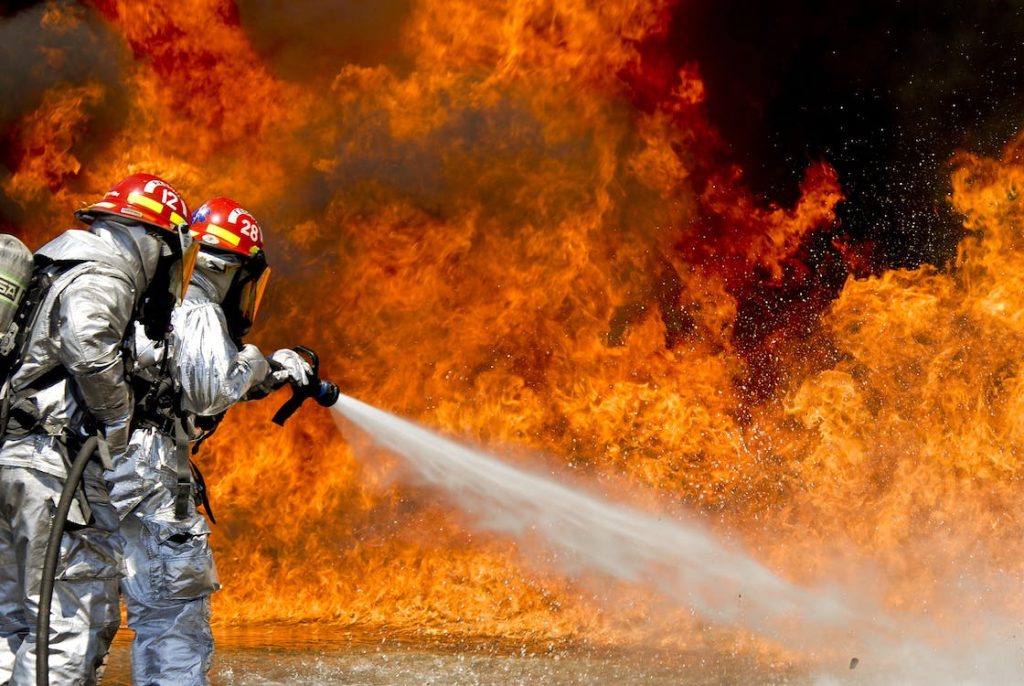
Firefighters employ a large variety of specialized gear to protect themselves from the hazards they face while responding to emergencies. The function of these gears is to provide thermal protection, prevent burns, offer respiratory support, and enhance overall safety. The firefighting gear allows firefighters to carry out their duties effectively, ranging from extinguishing fires to rescuing victims.
What Is A firefighter Gear Room?
Firefighters typically keep their gear in a designated area within a fire station known as the “bunker gear room” or “turnout gear room.” This room keeps personal protective equipment and other rescue tools in place for responding to emergencies. The gear that firefighters wear, often referred to as “turnout gear,” includes items such as:
• Fire-resistant jacket and pants
•Helmet
•Gloves
•Boots
•Hood
• Self-contained breathing apparatus (SCBA)
•Flashlight
Personal tools and equipment
Firefighters need to have quick and easy access to their gear at all times to be able to respond rapidly to emergency calls. Fire stations are designed with this in mind, providing storage solutions that allow firefighters to quickly get their gear and be ready to respond to a call.
Best Tips To Store Firefighter Gear
The best place to store firefighter gear is within the fire station itself, specifically in a dedicated area known as the “bunker gear room” or “turnout gear room, as mentioned earlier. Here are some further considerations for the placement and organization of firefighter gear:
1. Proximity to Apparatus Bays:
The gear room should remain close to the apparatus bays where firefighting vehicles are stationed. This minimizes the time it takes for firefighters to reach their gear and respond to emergency calls.
2. Separation from Living Quarters:
The gear room should be physically separated from the living quarters of the fire station to prevent contamination of living spaces with soot, dirt, and potential toxins that might be present on the gear after firefighting operations.
3. Ventilation and Exhaust Systems:
The room should have proper ventilation and exhaust systems to help remove any lingering odors, smoke residues, and potential contaminants from the gear. This helps maintain a healthy and clean environment within the station.
4. Individual Storage Spaces:
Each firefighter should have their own designated storage space within the gear room. This ensures that gear is easily accessible and properly organized, minimizing the risk of confusion or misplaced items.
5. Drying and Cleaning Equipment:
The room may have specialized equipment for drying and cleaning gear after firefighting operations. This helps extend the lifespan of the gear and reduces the potential for mold or bacterial growth.
6. Hanging Racks and Hooks:
Gear should be stored on hanging racks and hooks to allow proper air circulation, which aids in drying and prevents the growth of odor-causing bacteria.
7. Separate Storage for Contaminated Gear:
Contaminated or soiled gear should be stored separately from clean gear to prevent cross-contamination. This may involve designated areas or containers for gear that has been exposed to hazardous materials.
8. Regular Maintenance:
Regular inspections and maintenance of gear should be part of the routine in the gear room. This includes checking for wear and tear, and damage, and ensuring that gear is up to safety standards.
Tips for Maintaining efficient Gear Room
Organizing the gear room efficiently is important for maintaining readiness and ensuring that gear is in good condition. This involves regular inspections, cleaning, maintenance, and rotation of equipment to ensure that everything is in working order and ready to be used when needed. Overall, the goal is to create an organized, clean, and efficient space that ensures the safety of firefighters’ gear.
Ideal Storing Temperature Of Fire Fighter Gears
The ideal temperature for storing firefighting gear is generally within a controlled range that helps maintain its integrity. Here are some temperature guidelines to consider for storing firefighting gear:
1. Cool and Dry Environment:
The storage area should be kept relatively cool and dry to prevent the growth of mold, mildew, and bacteria on the gear. A temperature range of around 60 to 70 degrees Fahrenheit (15 to 21 degrees Celsius) is generally considered suitable.
2. Avoid Extreme Heat:
Firefighting gear withstands high heat, but extreme temperatures can still have an impact on the materials over time. Avoid storing gear in excessively hot environments, such as direct sunlight or areas with temperatures above 100 degrees Fahrenheit (38 degrees Celsius).
3. Avoid Extreme Cold:
Extremely cold temperatures can also affect the flexibility and performance of some materials in firefighting gear. It’s best to avoid storing gear in areas that experience prolonged freezing temperatures.
4. Avoid Rapid Temperature Fluctuations:
Rapid fluctuations in temperature can lead to condensation and moisture buildup within gear components, which can affect their performance and promote mold growth. Therefore, it’s important to maintain a relatively consistent temperature in the storage area.
In addition to temperature considerations, it’s important to store firefighting gear away from direct sunlight, chemicals, and contaminants. Designing the storage area to allow for proper air circulation, such as by using hanging racks and hooks, can also contribute to maintaining the gear’s readiness and longevity.

Leave a Reply